Every year, as the early summer sun begins to stretch its arms across Mumbai, a quiet transformation takes place. The city, usually wrapped in shades of grey and green, bursts into sudden celebration—with streets and avenues lit up in a blaze of yellow. The Amaltas trees, also known as the Golden Shower tree or Cassia fistula, bloom almost overnight, their long, drooping clusters of flowers turning the skyline into a golden canopy.
To most, they are just seasonal blooms, a floral punctuation between spring and monsoon. But for me, the Amaltas—known lovingly in Malayalam as Konna or Konnapoo—are far more than ornamental. They are reminders of tradition, of home, and most deeply, of my mother. They are threads of memory, stitched tightly into the fabric of my identity. Their blooming signals not just the arrival of summer, but something more intimate: the festival of Vishu, the Malayalam New Year, symbolising prosperity, purity, and the promise of new beginnings. My connection to the Konnapoo was never just spiritual or symbolic. It was personal.
Every year around April, as Vishu approached, my mother would gently remind me: “Make sure we have konna flowers for Vishu.” In a city of glass, concrete, and fast-paced distractions, finding something as specific and culturally rooted as Konnapoo felt like a minor miracle. But Mumbai, for all its chaos, holds unexpected corners of grace.
Tracing Golden Memories
It was during my time working at Aarey Colony at Goregaon that I truly discovered this. Aarey Colony, often called the green lung of the city, is a rare stretch of urban forest—a pocket of quiet where the sounds of the city fade into birdsong and rustling leaves. It was here, quite by chance, that I spotted the tall Amaltas trees lining the road near the Imperial Hotel. Their golden flowers draped like chandeliers from the branches, and I remember thinking: This is it—this is the konnapoo my mother longs to see each year.
But gathering them wasn’t easy. The trees were tall, and the flowers out of reach. That’s when a colleague of mine, also a local resident and perhaps amused by my mission, offered to help.
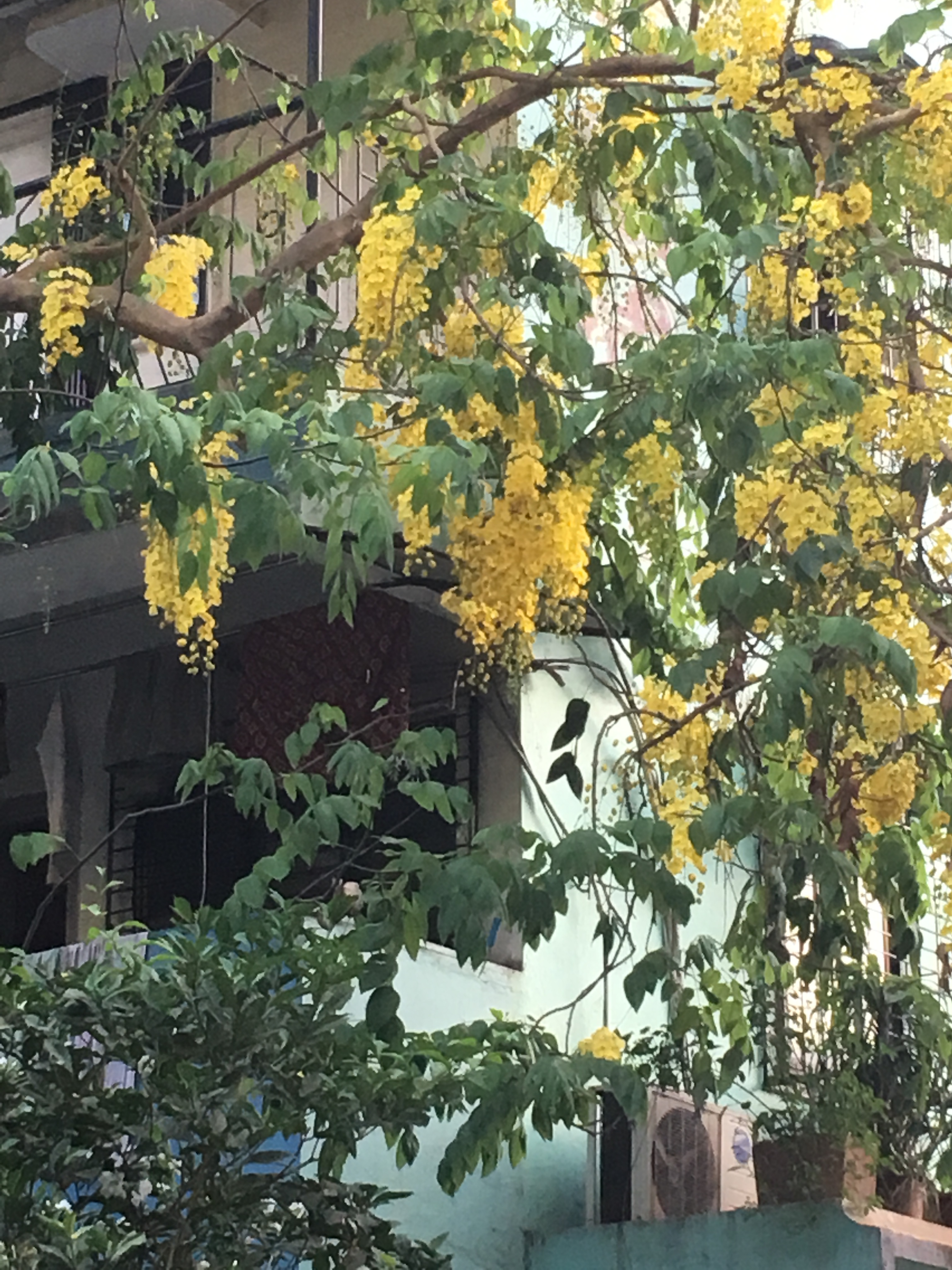
Blooms of Amaltas or Konnapoo
Every year after that, with Chandrakant’s help, I would collect the blooms—not plucked from the branches, but gently gathered from the ground—fresh, delicate, still holding the morning dew. I would carry them home in a cloth bag, careful not to crush them.
At home, we would arrange the Vishukkani—a symbolic display meant to be seen first thing on Vishu morning. A traditional arrangement of rice, fruits, a mirror, coins, a lit lamp, and at the very centre, the bright yellow Konnapoo. My mother’s eyes would light up at the sight. “You found them,” she’d say, her voice full of warmth and quiet joy. And with that, the year felt properly begun.
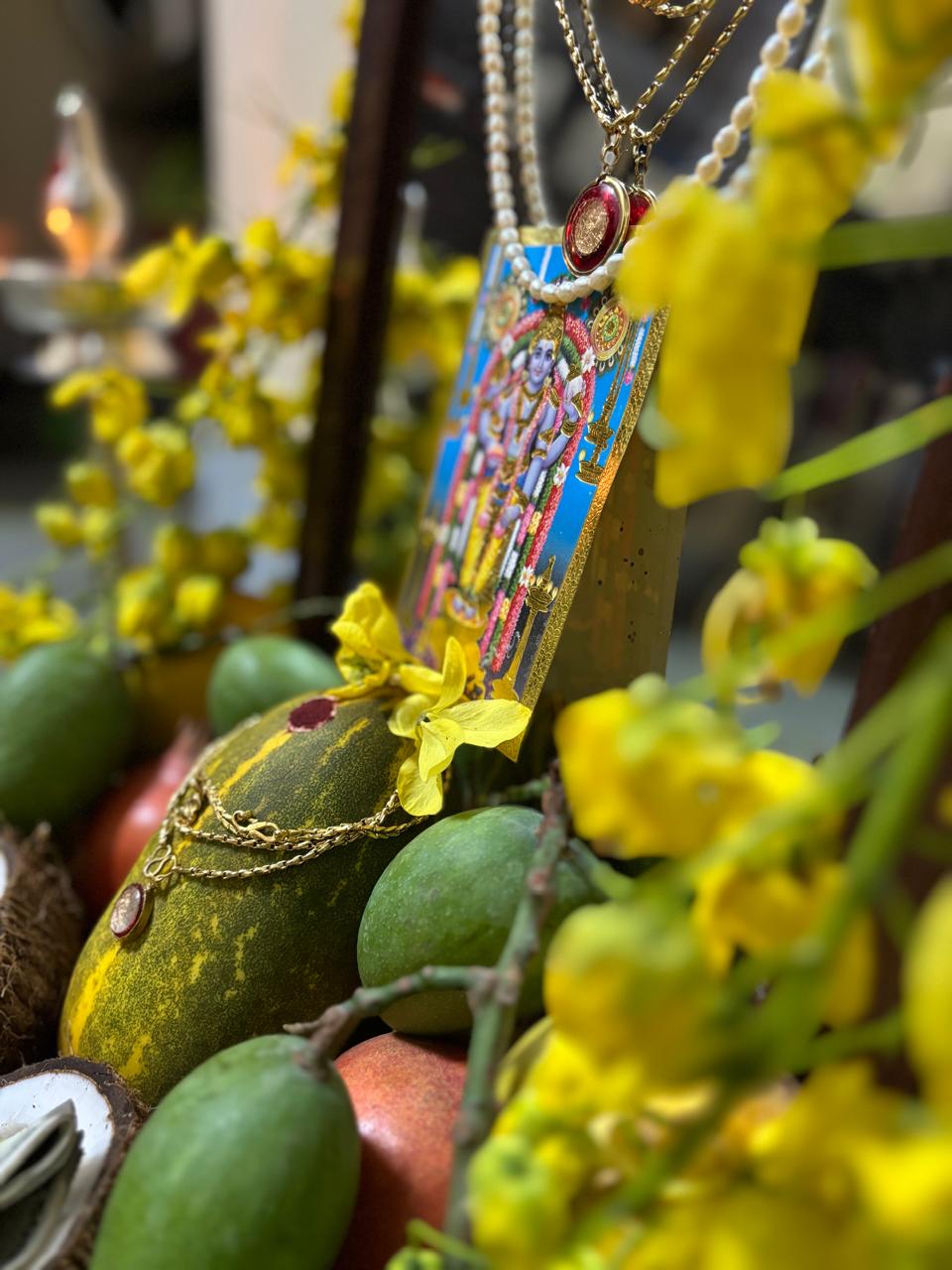
Vishukkani – Celebration of the Malayali New Year
She passed away three years ago. And yet, every year since, as the first clusters of Amaltas appear, I feel her presence more than ever. I no longer gather the flowers for a ritual at home, but I still find myself spotting one near an alley or standing beneath those golden trees, looking up in silence.
The Amaltas has become more than just a tree to me—it’s a keeper of memories. Each petal is a reminder of my mother’s affection, her insistence on preserving tradition even in a city. Her voice, once a phone call or a gentle nudge, now echoes in the rustle of those yellow blossoms: “Vishu isn’t complete without Konnapoo.”
And somehow, it never is.
Blooms Beckon Me Back
Even now, though I no longer visit Aarey regularly, the ritual continues. Just before Vishu, I still find them—close to home, tucked between city lanes or in unexpected corners. The Amaltas finds me—as if the flowers know their role in my story.
Not just for the sake of tradition, but for her—for the memory of her gentle voice, her unspoken love language, and her deep belief that beauty and hope belong in every new beginning.
I often wonder why these flowers carry such weight in my heart. Perhaps it’s because they bloom so fiercely, so briefly. Like a memory that flares up vividly and fades, leaving behind warmth and longing. Perhaps it’s because they make you look up—to the trees, to the skies, to the people who came before you.
In a city like Mumbai, where the passage of time is marked more by deadlines than seasons, the blooming of Amaltas is an act of defiance. It reminds us to pause. To look. To remember.
This Vishu, like the ones before, I stood in front of my Vishukkani and gently placed the konnapoo at the centre. The flowers glowed in the morning light, and I could almost hear her: “Now it feels complete.”
Yes, Amma. It always does—when the konnapoo blooms.
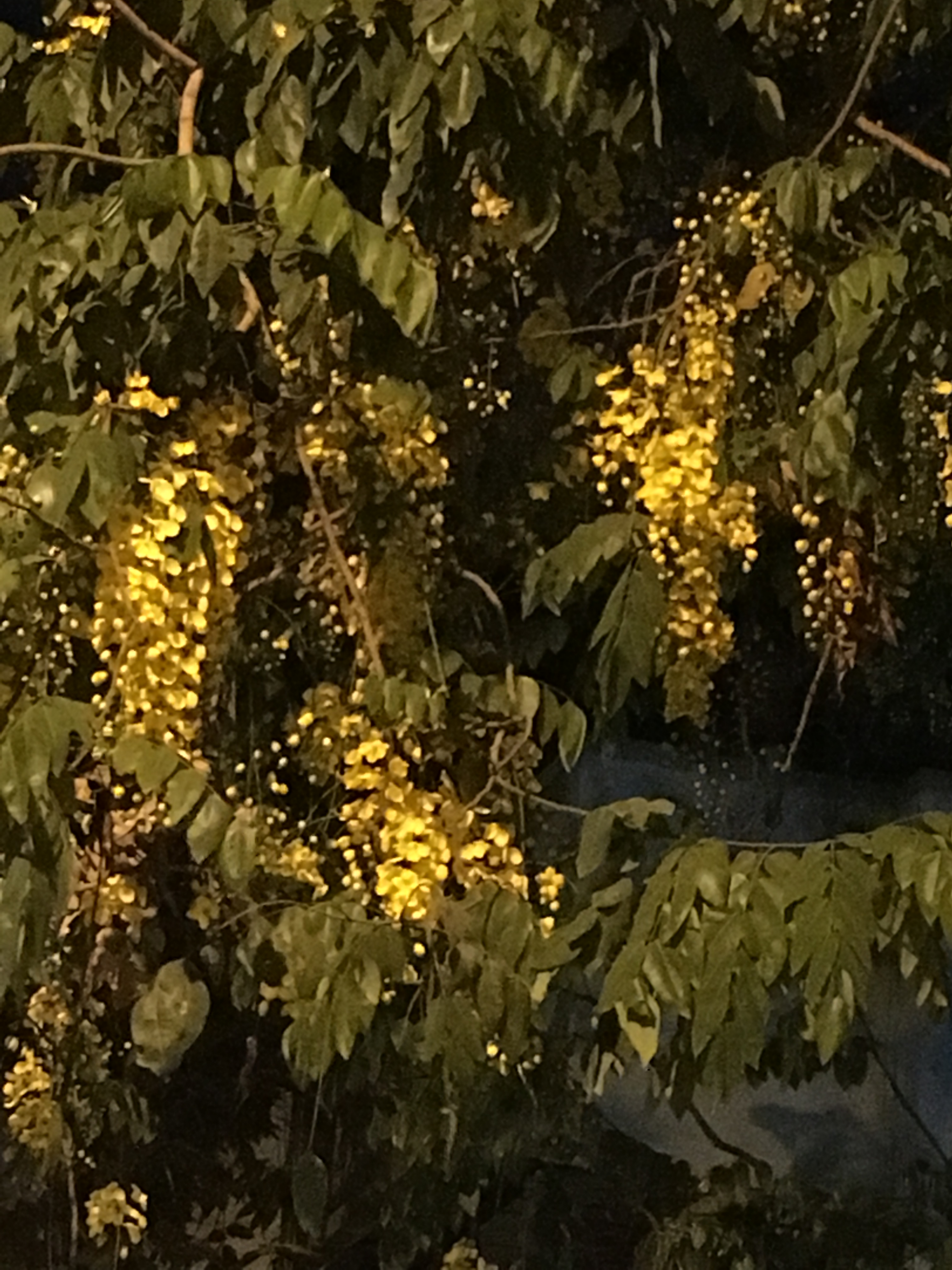
About the author: Preeti Swaminathan is a journalist, writer, and editor with nearly two decades of experience. In her free time, she enjoys nature walks, hiking, birdwatching, and stargazing

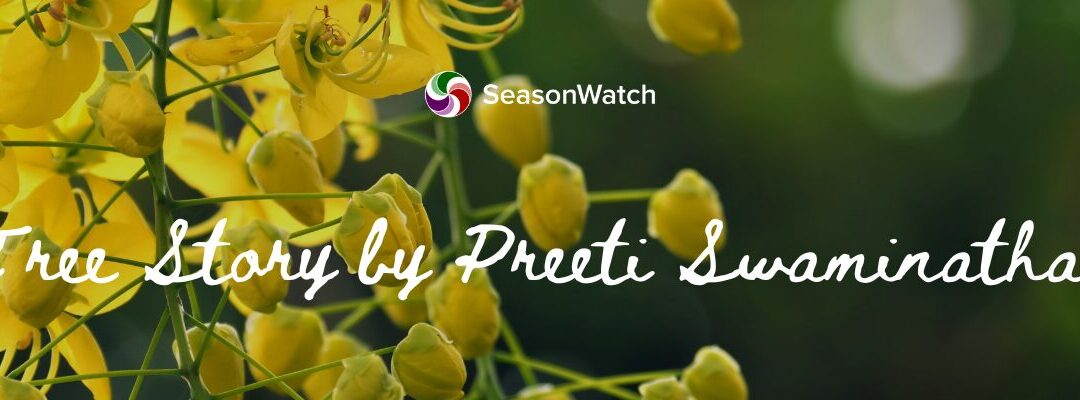




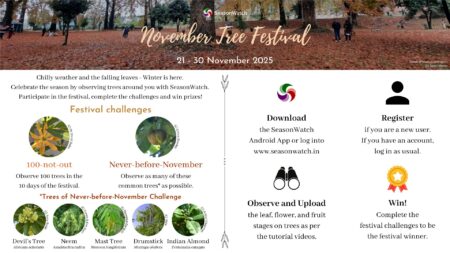
❤️
Beautiful, it touched my heart that so many people have connections with trees, just like me.
Amaltas are my younger daughter spurthi’s favourite flowers.she asked me why don’t we have amaltas in our home garden?she ordered seeds online.planning to grow amaltas .